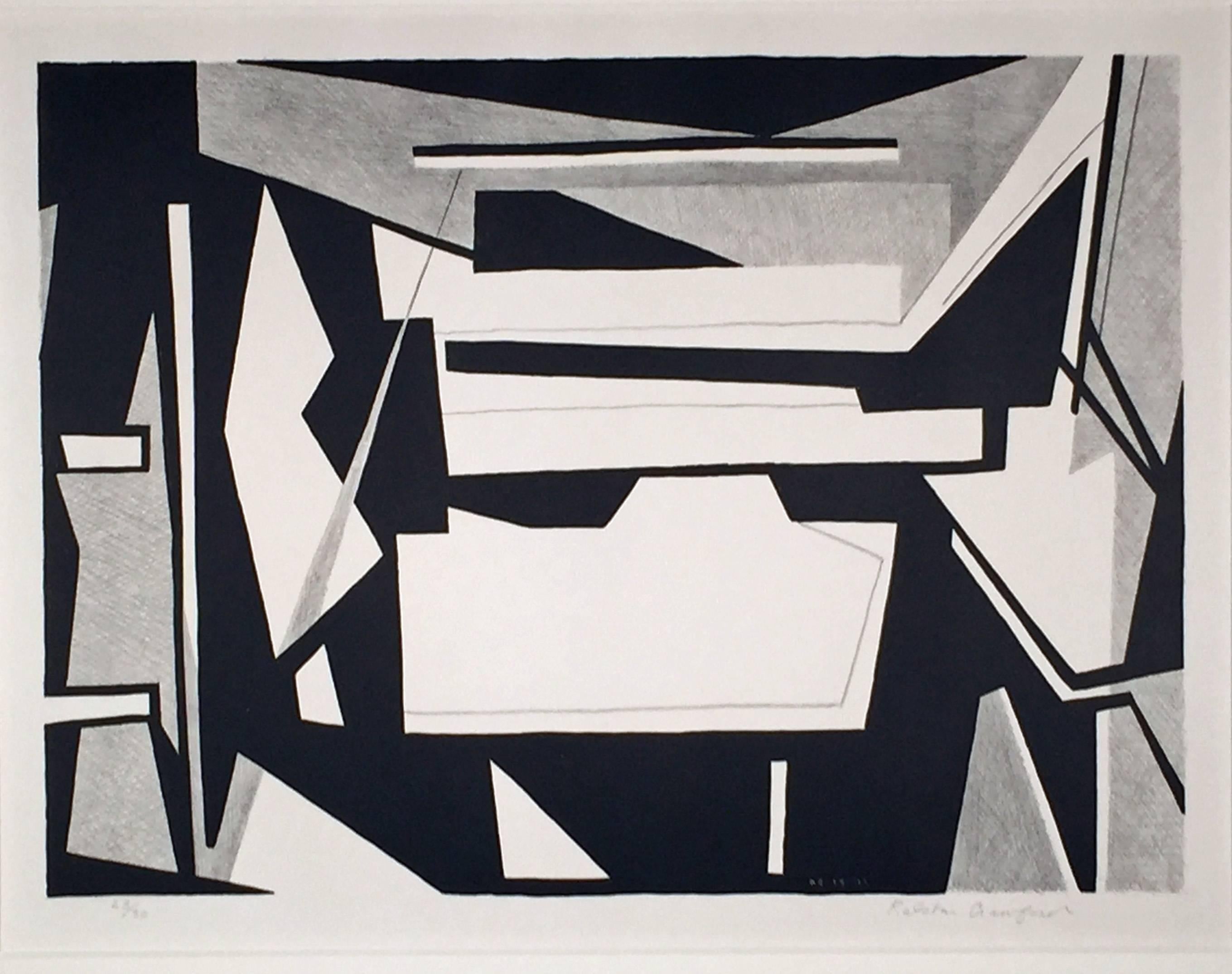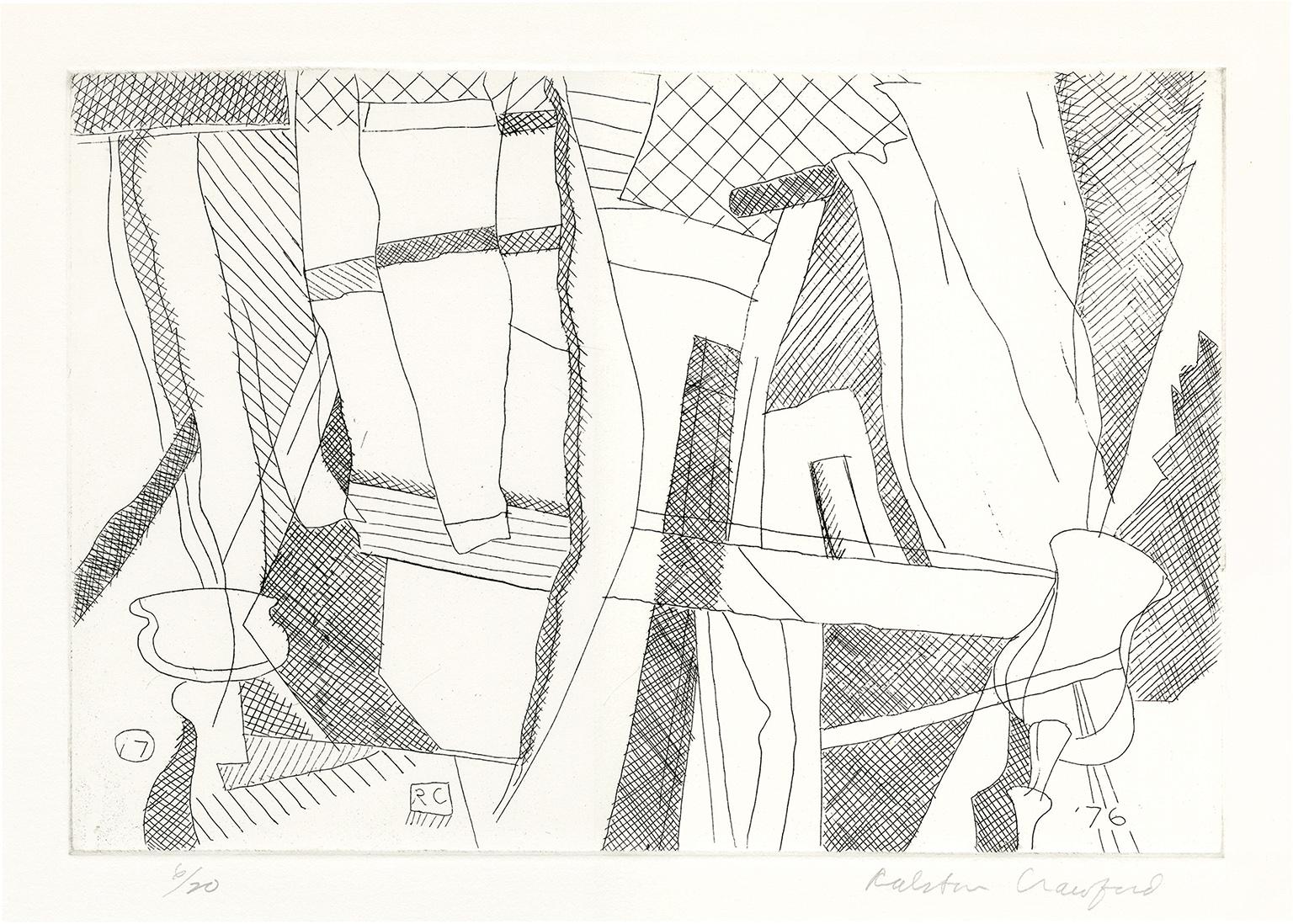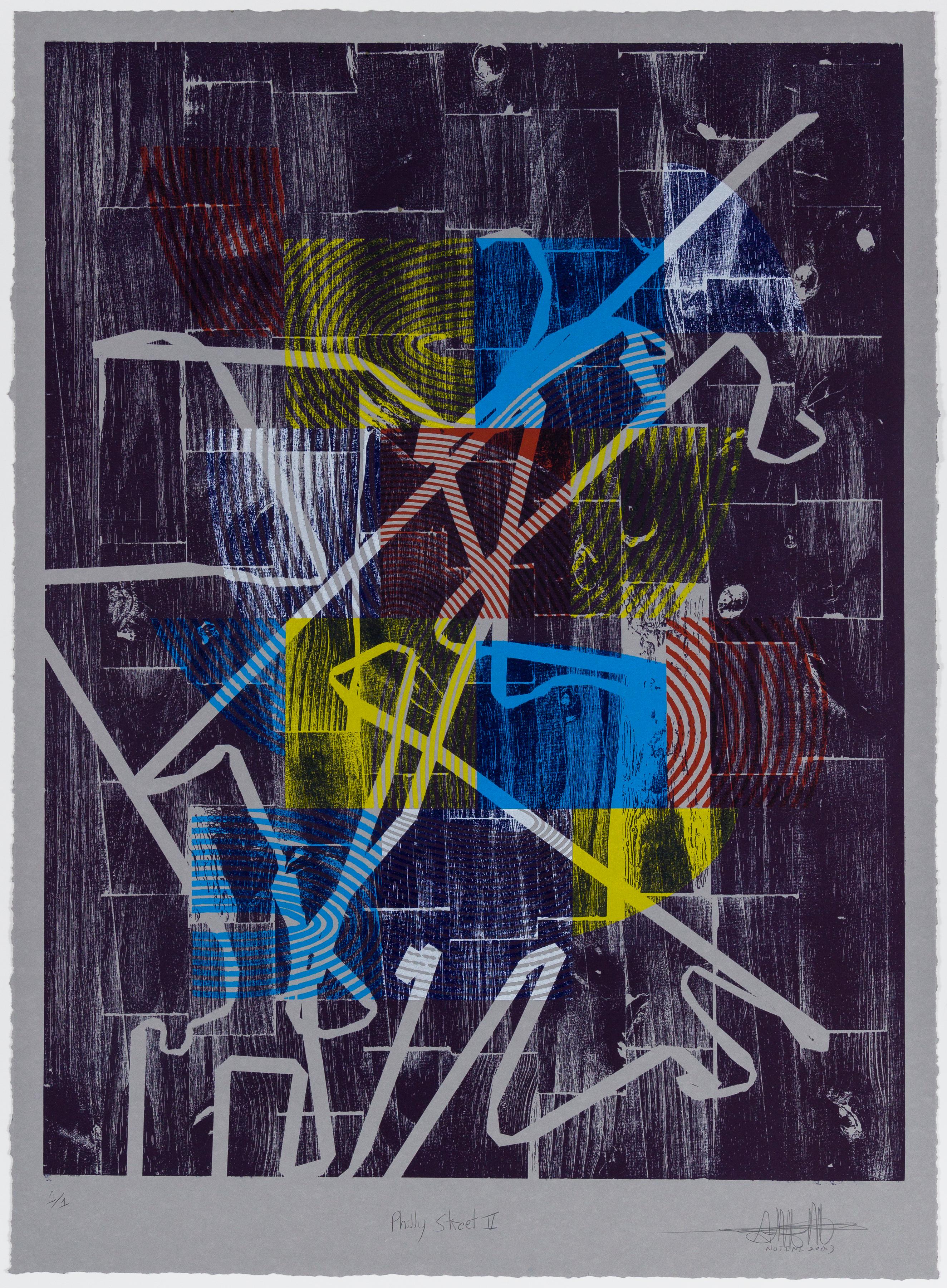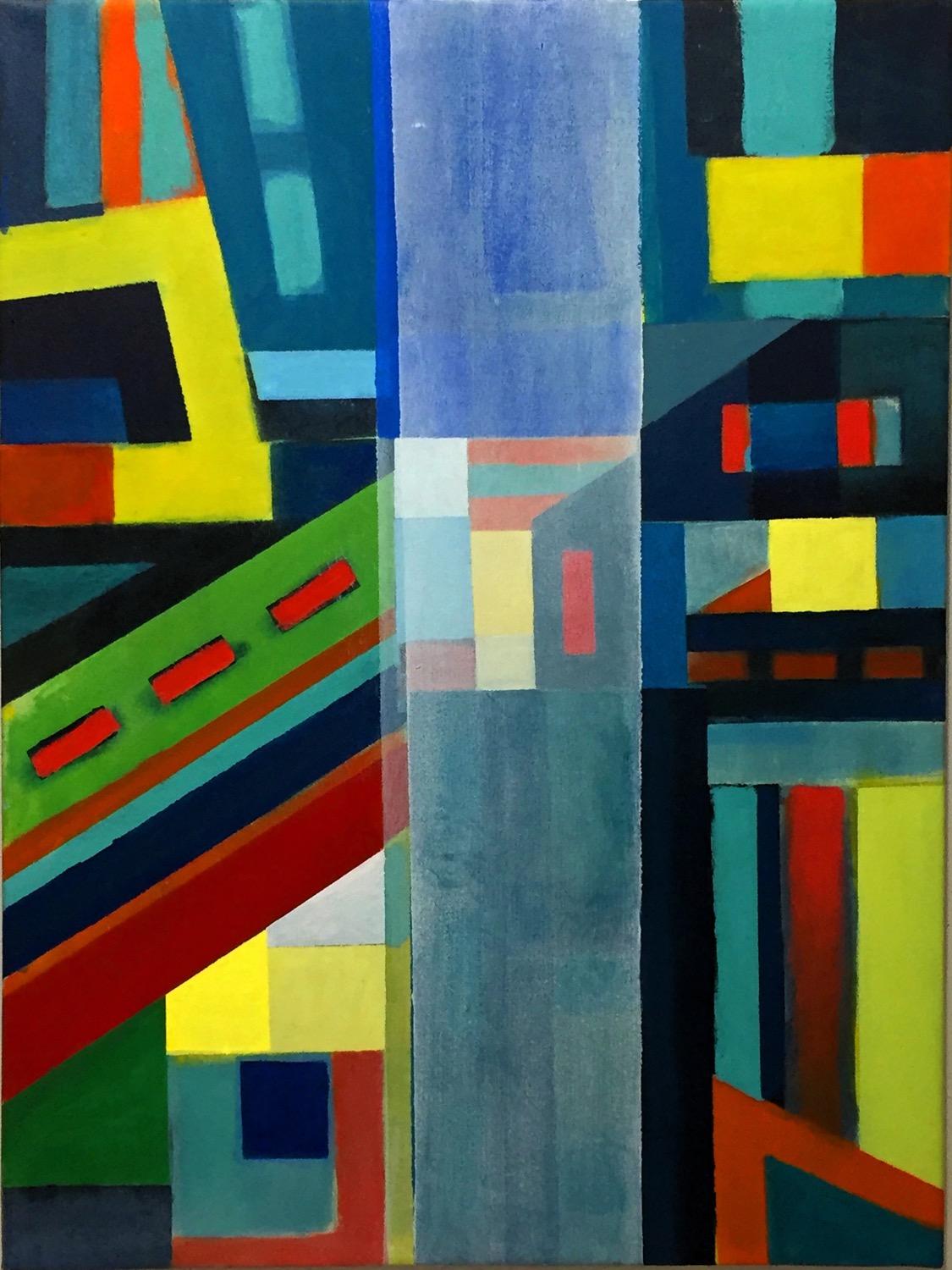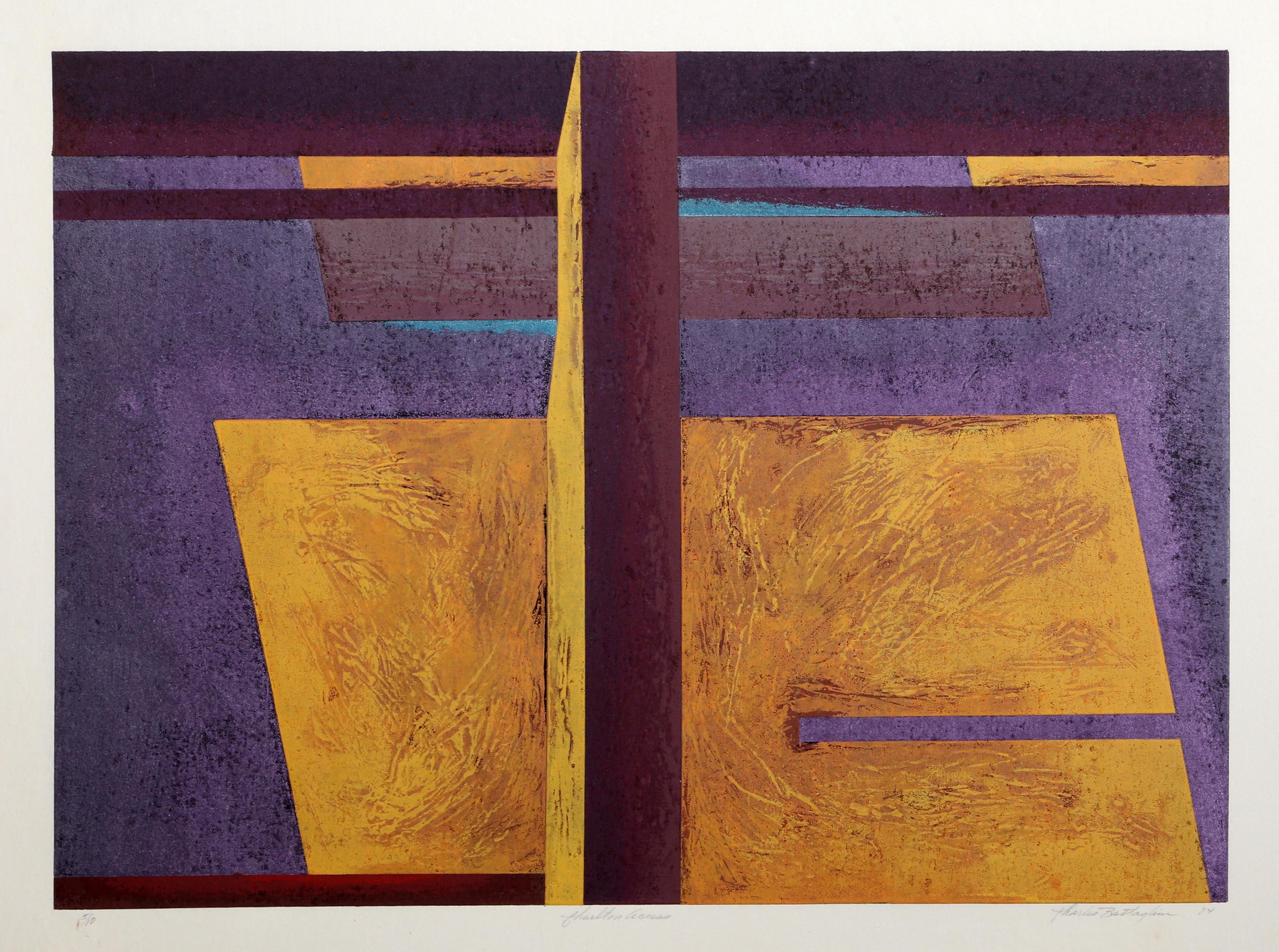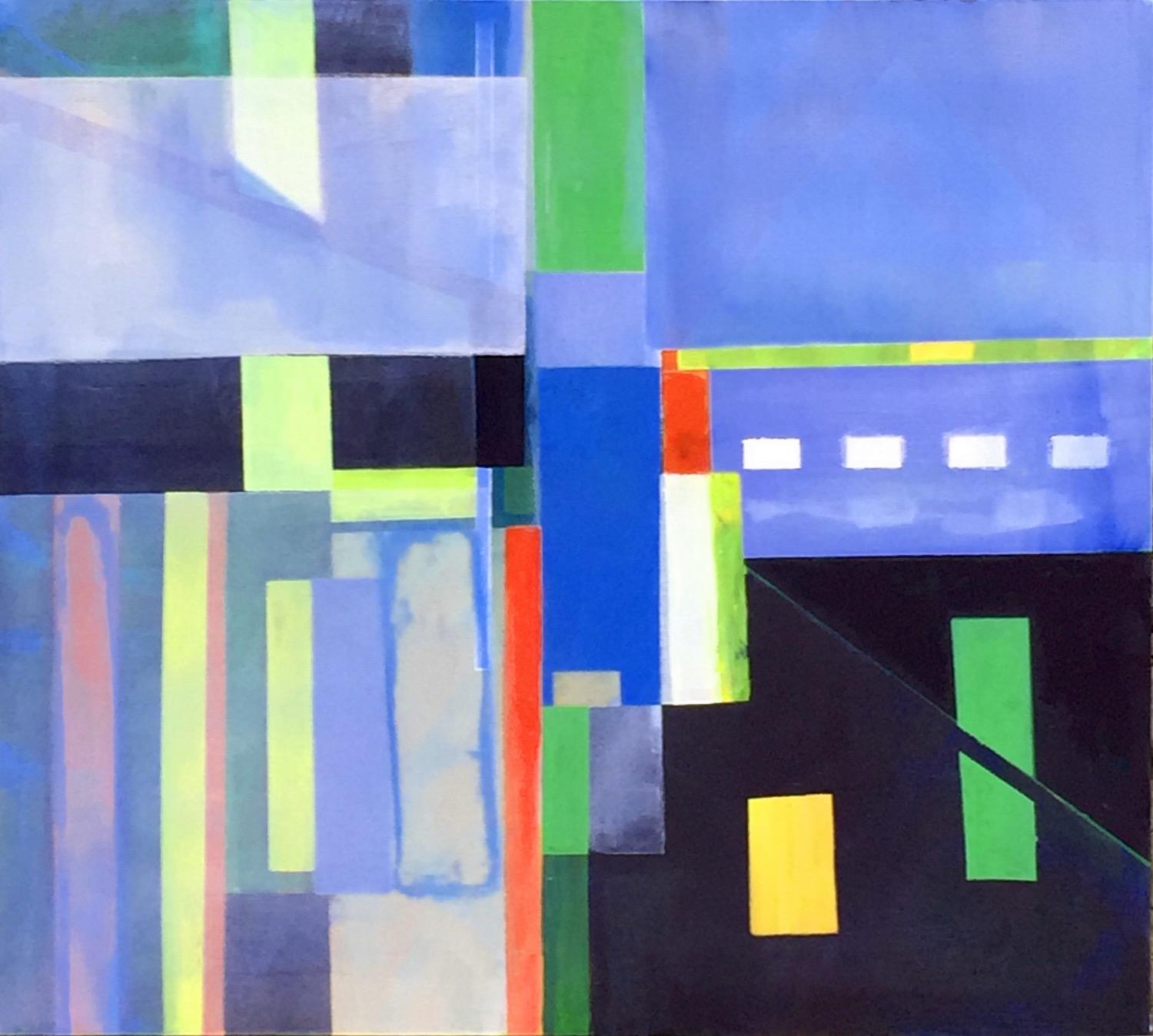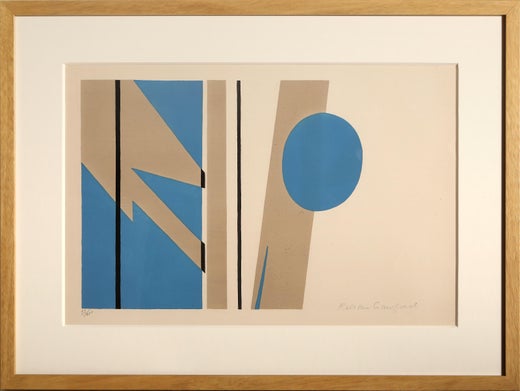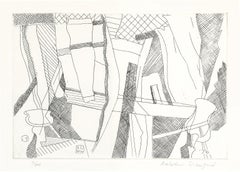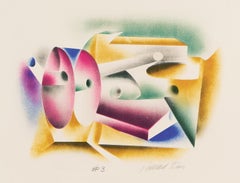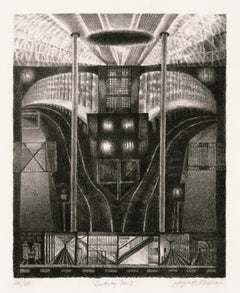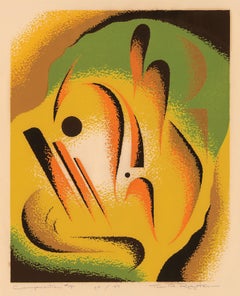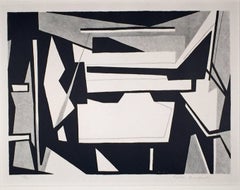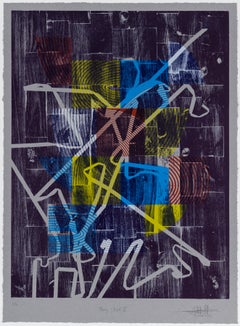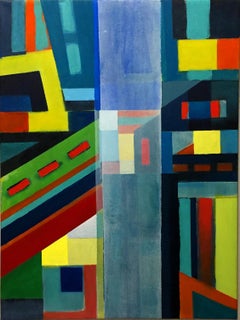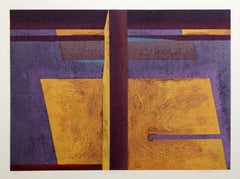Items Similar to 'Third Avenue Elevated #1' — Mid-century Precisionist Abstraction
Want more images or videos?
Request additional images or videos from the seller
1 of 6
Ralston Crawford'Third Avenue Elevated #1' — Mid-century Precisionist Abstraction1951
1951
$4,600
£3,543.30
€4,046.04
CA$6,562
A$7,177.60
CHF 3,766.63
MX$85,840.14
NOK 47,534.65
SEK 44,344.09
DKK 30,216.48
About the Item
Ralston Crawford, 'Third Avenue Elevated #1', lithograph, 1951, edition 55. Freeman L51.4. Signed, titled and numbered '48/55' in pencil. A fine, richly-inked impression, with rich colors, on Rives BFK cream wove paper; the full sheet with margins (1 1/8 to 1 1/4 inches), in excellent condition. Printed by Robert Marteaud, Desjobert, Paris. Matted to museum standards, unframed. Scarce.
Image size 10 7/16 x 17 3/8 inches (318 x 476 mm); sheet size 15 x 22 3/8 inches (381 x 568 mm).
Literature: 'The lithographs of Ralston Crawford', Richard B. Freeman, University of Kentucky Press, 1962; 'Ralston Crawford', Barbara Haskell, Whitney Museum of American Art, New York, 1986, p. 110.
Impressions of this work are held in the following public collections: Amhest College, Amon Carter Museum of American Art, Cincinnati Art Museum, Harvard Art Museums, Museum of Fine Arts Boston, Museum of Modern Art, St. Louis Art Museum, University of Alabama, Vassar College Art Gallery, Whitney Museum of American Art.
ABOUT THE ARTIST
Ralston Crawford (1906-1978) was born in St. Catherines, Ontario, Canada. He grew up in Buffalo, New York, and as a child, he explored the Great Lakes with his father, a ship captain. In 1926, Crawford went to sea on a tramp steamer and sailed the Caribbean and Pacific Oceans. Settling briefly in Los Angeles, he found work at the Walt Disney Studios while studying at the Otis Art Institute.
From 1927 to 1930, scholarships enabled Crawford to study at the Pennsylvania Academy of Fine Arts in Philadelphia, under Hugh Henry Breckenridge, and at the Barnes Foundation in Merion, Pennsylvania. After briefly painting in New York, he became interested in the innovations of the then nascent American modernist art movements. He won a Tiffany Foundation Grant and traveled to Europe in 1932. In Paris, he attended the Académie Colarossi and the Académie Scandinave.
Crawford initially worked in a representational style upon his return to New York in 1933. His first one-man show was held at the Maryland Institute of Art in Baltimore in 1934. He attended the first American Artists Congress in New York in 1936 and became allied with the left-wing artists active in New York City. Until 1939, he painted at Chadds Ford and Exton, Pennsylvania, and taught briefly at the Art Academy of Cincinnati and Albright School in Buffalo, but after 1940, New York City remained his home.
During World War II, Crawford served as Chief of the Visual Presentation Unit in the Army Air Force Weather Division in Washington, D.C. His experience there, creating easily identifiable maps and icons in charting weather movements, greatly influenced his work—the distillation of physical objects and felt experience into essential graphic forms became a key impetus to his highly personal abstraction. He was posted to the China-Burma-India Theater of War as an artist-correspondent for Fortune Magazine. Crawford was the only painter to witness the tests of nuclear weapons at Bikini Atoll in the Marshall Islands in 1946. These wartime experiences reinforced Crawford’s preoccupation (perhaps engendered by his time at sea) with the dual and polar aspects of life’s energy: creation and destruction. While employing the Precisionist vernacular of solidity and permanence in his paintings and prints, Crawford continued to express his concern with the counterpoint themes of decay and transformation.
After his discharge from the Army, Crawford served as director of the Honolulu School of Art in 1947. During this period, his Precisionist paintings depicted ships and industrial landscapes—dynamic compositions of hard-edge shapes and flat color. To support himself, he took on temporary teaching jobs and residencies at colleges and universities across the country. Between 1948 and 1950, he taught at the Brooklyn Museum School, the Art Academy of Cincinnati, the University of Minnesota, and Louisiana State University in Baton Rouge, where he was first introduced to New Orleans jazz, a form of creative expression and culture that would become a lifelong fascination.
Crawford took up photography around 1937 and continued to photograph during his extensive travels, focusing on representational abstraction as well as genre images and reportage. In 1950, he began photographing and documenting the lives of black jazz musicians in New Orleans, Louisiana, a city and subject to which he would frequently return.
In 1951, Crawford returned to France to paint and to collaborate with the French master lithographers in 1954-55, 1957, and 1959. He taught at the New School for Social Research in New York from 1952 to 1957. Although he worked unceasingly, sales of his paintings were slight during the 1950s; however, consistent demand for his prints encouraged him to continue making lithographs. His first solo exhibition, which included many of his graphic works, was held at the University of Alabama in 1953 and marked the publication of Richard B. Freeman’s monograph on Crawford’s lithographs.
In 1958 an important retrospective of Crawford’s paintings, drawings, prints, and photographs was held at the Milwaukee Art Center. After a residency at the University of Colorado, he joined the faculty of Hofstra College in 1960. He later taught briefly at the University of Kentucky and the University of Southern California. Sixty-five of Crawford’s lithographs were featured in a traveling show organized by the University of Kentucky at Lexington in 1961. In the same year, another retrospective of his paintings and prints was held at the Tweed Gallery of the University of Minnesota in Duluth, where Crawford taught during the summer.
During the last years of his life, Crawford traveled extensively, journeying to North Africa, the South Pacific, and the Far East. In 1971, the artist learned that he had cancer; however, neither his travel nor his work abated. Crawford died in Houston, Texas, on April 27, 1978, in the midst of arranging for another exhibition. Survived by his wife and three children, his family laid him to rest in his much-loved city of New Orleans with a traditional jazz funeral.
Crawford’s unique contribution to American modernism was recognized throughout his career and to the present. His work has been the subject of numerous solo exhibitions beginning in 1934 at The Maryland Institute, Paintings by Ralston Crawford, and extending to the 1922 Dayton Art Institute exhibition Ralston Crawford: Air + Space + War.
The public collections holding work by Ralston Crawford include, Addison Gallery of American Art, Clay Center for the Arts and Sciences, Fred Jones Jr. Museum of Art (University of Oklahoma), Georgia Museum of Art (University of Georgia), Harvard University Art Museums, Hirshhorn Museum and Sculpture Garden, Honolulu Museum of Art, J. Paul Getty Museum, Museum of Fine Arts, Boston, James A. Michener Art Museum, Kemper Museum of Contemporary Art (Kansas City, Missouri), Kresge Art Museum (Michigan State University), Los Angeles County Museum of Art, Mead Art Museum (Amherst College), Museum of Modern Art (New York City), Saint Louis Art Museum, National Gallery of Art, Norton Museum of Art (West Palm Beach, Florida), The Phillips Collection, San Francisco Museum of Modern Art, Smithsonian American Art Museum, Tweed Museum of Art (University of Minnesota, Duluth), Walker Art Center (Minnesota), Utah Museum of Fine Arts (Salt Lake City), Cincinnati Art Museum, Munson-Williams-Proctor Arts Institute (Utica, New York), and Whitney Museum of American Art.
- Creator:Ralston Crawford (1906-1978, American)
- Creation Year:1951
- Dimensions:Height: 10.438 in (26.52 cm)Width: 17.375 in (44.14 cm)
- Medium:
- Movement & Style:
- Period:
- Condition:
- Gallery Location:Myrtle Beach, SC
- Reference Number:Seller: 1030291stDibs: LU532316260272
Ralston Crawford
Ralston Crawford ( Canadian/American, 1906-1978) was a Canadian born American painter and printmaker recognized internationally for his pioneering work in the movement of Precisionism, a style that stressed flat colors, sharp edges with little texture, and embraced industrial images, such as grain elevators, bridges, railroads, and factory scenes, often reducing theses subjects to their essential geometric forms. Crawford also worked in the medium of photography, both as a tool for the painter and as an abstract medium itself. He studied in Los Angeles, Columbia University and Paris. He worked at U.S galleries such as Albright Knox art gallery. He grew up in Buffalo, N.Y. . His history is extensive and is known for his profession as painter, lithographer, illustrator, photographer, lecturer and teacher.
About the Seller
5.0
Recognized Seller
These prestigious sellers are industry leaders and represent the highest echelon for item quality and design.
Platinum Seller
Premium sellers with a 4.7+ rating and 24-hour response times
Established in 1995
1stDibs seller since 2016
333 sales on 1stDibs
Typical response time: 1 hour
Associations
International Fine Print Dealers Association
- ShippingRetrieving quote...Shipping from: Myrtle Beach, SC
- Return Policy
More From This Seller
View All'Les Penitentes #3' — 1970s Modernist Abstraction
By Ralston Crawford
Located in Myrtle Beach, SC
Ralston Crawford, 'Los Penitentes #3', etching, 1976, edition 20. Signed and numbered '6/20' in pencil; titled and annotated 'specially selected for Marcelle and Dan' in the bottom s...
Category
1970s Abstract Abstract Prints
Materials
Etching
#3 — Modernist Abstraction — African American Artist
Located in Myrtle Beach, SC
Hilliard Reynolds Dean, '#3', color lithograph, 1970, edition not stated but small. Signed and titled in pencil. A fine impression, with fresh colors, on Arches, heavy, cream wove pa...
Category
1970s American Modern Abstract Prints
Materials
Lithograph
'Subway No. 3' — Mid-century Modernism, New York City
By August Mosca
Located in Myrtle Beach, SC
August Mosca, 'Subway No. 3', lithograph, c. 1946-56, edition 50. Signed, titled and numbered '28/50' in pencil. A fine, richly-inked impression on off-white, wove paper; the full sh...
Category
Mid-20th Century American Modern Abstract Prints
Materials
Lithograph
'Composition # 4' — Mid-Century Modernism
By Thomas A. Robertson
Located in Myrtle Beach, SC
Thomas Robertson, 'Composition #4,' color serigraph, edition 47, c. 1940. Signed, titled, and annotated 'Ed/47' in pencil. A superb, painterly impression, with fresh colors, on buff wove paper, the full sheet with margins (1 to 2 inches), in excellent condition. Matted to museum standards, unframed.
Image size: 10 9/16 x 8 1/2 inches (268 x 216 mm); sheet size 13 x 12 1/2 inches (330 x 318 mm).
An impression of this work is represented in the collection of the National Gallery of Art.
ABOUT THE ARTIST
Born in Little Rock, Arkansas, Thomas Arthur Robertson (1911-1976) was the son of an attorney. Although his father, a co-owner of the Arkansas Law School, insisted that his son study there, after graduating, Robertson enrolled at the Adrian Brewer...
Category
1940s Abstract Abstract Prints
Materials
Screen
'#9' — Modernist Abstraction — African American Artist
Located in Myrtle Beach, SC
Hilliard Dean, '#9', color lithograph, 1970, edition 7. Signed, titled, and annotated 'Ed 7' in pencil. A fine impression, with fresh colors, on Arches, ...
Category
1970s Contemporary Abstract Prints
Materials
Lithograph
'Untitled Fantasy' — 1980s Surrealist Abstraction
By Edward August Landon
Located in Myrtle Beach, SC
Edward Landon, 'Untitled Fantasy', color serigraph, 1983, edition 30, Ryan 214. Signed, titled, and annotated 'Edition 30' in pencil. A fine impression, with fresh colors, on off-whi...
Category
Mid-20th Century Abstract Abstract Prints
Materials
Screen
You May Also Like
LAFAYETTE STREET
By Ralston Crawford
Located in Portland, ME
Crawford, Ralston. LAFAYETTE STREET. Freeman 54.11 Lithograph printed in gray and black on white paper, 1954. Edition of 30, signed in pencil and numbered 23/30. 16 x 22 inches, 407 ...
Category
1950s Abstract Abstract Prints
Materials
Lithograph
"Philly Street V", Abstract Patterns, Geometric Abstraction, Woodcut Monoprint
Located in Philadelphia, PA
This piece titled "Philly Street V" is an original piece by Alexis Nutini and is made from a woodcut and found object stencil monoprint. This piece measures 40"h x 29.5"w and ships u...
Category
21st Century and Contemporary Contemporary Abstract Prints
Materials
Found Objects, Monoprint, Woodcut
City Block Series #1, East Village New York (Geometric Abstract)
By Robert Petrick
Located in Los Angeles, CA
Robert W. Petrick - City Block Series #1
2021
Acrylic on canvas
40 x 30 x 1.5 inches
East Village New York Geometric Abstract Stretched Painting
Robert Petrick's paintings create ...
Category
21st Century and Contemporary Abstract Geometric Abstract Paintings
Materials
Acrylic
Charlton Access, Minimalist Woodcut print by Charles Battaglini
By Charles Battaglini
Located in Long Island City, NY
Charles Battaglini was a professional artist/teacher in printmaking. He exhibited for more than 55 years in juried and gallery exhibits, including the Associated Artists...
Category
1980s Abstract Geometric Abstract Prints
Materials
Woodcut
Sub-Series Underground Composition #8, East Village NYC Geometric Abstract
By Robert Petrick
Located in Los Angeles, CA
Robert W. Petrick
Sub-Series Underground composition #8, 2022
acrylic on canvas
NYC, 2nd street studio
Colorful geometric abstract acrylic painting on canvas.
Robert Petrick's pain...
Category
21st Century and Contemporary Abstract Geometric Abstract Paintings
Materials
Acrylic, Canvas
Minimalist Abstract Geometric Screenprint 1969 by Michael Argov
By Michael Argov
Located in Long Island City, NY
Artist: Michael Argov, Austrian/Israeli (1920 - 1982)
Title: untitled 1
Year: 1969
Medium: Screenprint, signed and numbered in pencil
Edition: 32
Size: 27.5 x 20 inches (69.85 x 50....
Category
1960s Abstract Geometric Abstract Prints
Materials
Screen
$600 Sale Price
20% Off
More Ways To Browse
Lexington Vintage
Clay Sculpture Abstract Mid Century
Ship Captain
Miro Japan
Miro Lithograph 1
Miro Serie
Niko Ghika
Original Escher
Peter Alexander On Sale
Picasso Suite 347
Pierre Soulages Signed
Retro Paper Kites
Robert Indiana Bridge
Robert Indiana Indiana In Lewiston
Shiy De Jinn
Shlomo Cassos
Signed And Numbered Miro
Stella Michaels
